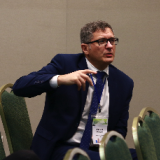Foaming and Injection Moulding in Polymer Processing
A special issue of Polymers (ISSN 2073-4360). This special issue belongs to the section "Polymer Processing and Engineering".
Deadline for manuscript submissions: closed (20 January 2019) | Viewed by 62063
Special Issue Editors
Interests: multiscale and multifunctional thermoplastic cellular materials; innovative foaming processes; new polymer processing technologies (extrusion, foaming, blow molding, injection molding, additive manufacturing, laser sintering, microfluidic, etc.); multifunctional composites based on thermoplastic matrices; thermoplastic composite laminates; stimuli responsive lightweight materials
Interests: analysis and simulation of injection moulding of thermoplastics; structure development in polymer processing; volume accuracy and stability in polymer processing; processing and degradation of biodegradable polymers
Special Issues, Collections and Topics in MDPI journals
Special Issue Information
Dear Colleagues,
Polymer processing has a major role on the impact that polymers have on industrial, as well as consumer, demands for specific structural and functional performances. Lightness, energy efficiency, low environmental footprint, reduction of raw material consumption, freedom in structural design and multifunctional properties are challenges that are ever more urgent for the polymer industry. Foaming and injection molding technologies have great potential to face contemporary challenges, and recent advancements are a clear expression of their capabilities to respond to the new needs of society.
The aim of this Special Issue is to gather the state-of-the-art in foaming and injection molding processing technologies. It will be a resource for researchers and industries searching for a comprehensive collection of the most recent advancements in the foaming and injection molding fields. This Special Issue is open to both original contributions and reviews, and is concerned with:
- developments in fundamental knowledge on processes, in particular on the thermodynamics and transport phenomena of blowing agents in thermoplastic and thermosetting polymers, blending, static and flow induced crystallization
- correlation between morphological structure and structural/functional performances
- multidisciplinary approaches to modelling and simulation of processing induced properties
- materials development in matrices, additives, blends, new foaming agents
- new processing technologies, with particular regard to new processing devices, new measuring tools and devices, systems for controlling the polymer process
- challenges and future perspectives on foaming and injection molding.
Dr. Luigi Sorrentino
Prof. Roberto Pantani
Guest Editors
Manuscript Submission Information
Manuscripts should be submitted online at www.mdpi.com by registering and logging in to this website. Once you are registered, click here to go to the submission form. Manuscripts can be submitted until the deadline. All submissions that pass pre-check are peer-reviewed. Accepted papers will be published continuously in the journal (as soon as accepted) and will be listed together on the special issue website. Research articles, review articles as well as short communications are invited. For planned papers, a title and short abstract (about 100 words) can be sent to the Editorial Office for announcement on this website.
Submitted manuscripts should not have been published previously, nor be under consideration for publication elsewhere (except conference proceedings papers). All manuscripts are thoroughly refereed through a single-blind peer-review process. A guide for authors and other relevant information for submission of manuscripts is available on the Instructions for Authors page. Polymers is an international peer-reviewed open access semimonthly journal published by MDPI.
Please visit the Instructions for Authors page before submitting a manuscript. The Article Processing Charge (APC) for publication in this open access journal is 2700 CHF (Swiss Francs). Submitted papers should be well formatted and use good English. Authors may use MDPI's English editing service prior to publication or during author revisions.
Keywords
- Foaming process of thermoplastic and thermosetting polymers
- Injection molding and foam injection moulding processes
- Sustainable materials for foaming and injection molding
- Micro- and Nano-foams
- Physical and chemical blowing agents
- Polymer blending and compounding
- Thermodynamics and transport phenomena related to foaming and injection molding processes
- Modelling and simulation of foaming and injection molding processes
- Structure/performance correlations
- Processing induced properties
- Measuring techniques and tools
- Process control tools
- Multidisciplinary approaches for performance improvement
- Functional and smart polymeric foams







